Please choose your country or region so we can show you the most relevant content.
It looks like you are in United States? Accept
Africa
- Algeria
- Angola
- Benin
- Botswana
- Burkina Faso
- Burundi
- Cabo Verde
- Cameroon
- Central African Republic
- Chad
- Comoros
- Congo
- Côte d'Ivoire
- Djibouti
- DR Congo
- Equatorial Guinea
- Eritrea
- Eswatini
- Ethiopia
- Gabon
- Gambia
- Ghana
- Guinea
- Guinea-Bissau
- Kenya
- Lesotho
- Liberia
Asia
Australasia
Europe
- Albania
- Andorra
- Austria
- Belarus
- Belgium
- Bosnia and Herzegovina
- Bulgaria
- Croatia
- Czechia
- Denmark
- Estonia
- Finland
- France
- Germany
- Greece
- Greenland
- Holy See
- Hungary
- Iceland
- Ireland
- Italy
- Latvia
- Liechtenstein
- Lithuania
North America
Middle East
In this issue of the Tentipi Blog we’re embarking on a most unique adventure, taking us by kayak from the icy shores of Greenland, across the north Atlantic to the cost of north Scotland, 1200 nautical miles (2200 kilometers) from the starting point. Host for this epic journey is british adventurer Olly Hicks, at age 23 he was the youngest person to row solo across the Atlantic Ocean from the USA to England and has since then pursued this world conquering lifestyle. For his latest adventure, Tentipi provided with a Safir 9 and an Eldfell wood burning stove to keep the video/photo team that followed Olly warm and sheltered in these arctic conditions. Alright, off we go!
It’s 0515 in the morning, we are 70nm offshore in the North Atlantic Ocean, the morning sun is threatening to rise above the horizon and we have been paddling our 26ft long kayak for the last 30hrs, non-stop. We are exhausted, hallucinating and our own survival hangs in the balance.
In 1728 an Inuit man arrived on a beach in the North East of Scotland, near Aberdeen. He was wearing full seal skin clothing, paddling a traditional Greenlandic skin-on-bone kayak and carrying all his hunting gear. He died 3 days later… Up until now nobody knows how that man got there, whether he did indeed paddle 1,200nm from Greenland or whether he came via other means! This is what we set out to unearth or at least add speculation to the fact that he might have paddled the entire way.
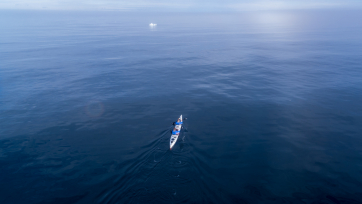 As we lowered the kayak into the water at the Greenlandic ice-edge, there was a mixture of emotions, from the fear as to what lay ahead of us, to excitement at the thought of experiencing true, unbridled adventure. We were about to do something that no human has ever attempted – potentially(!) and the stakes where high, very high!
As we lowered the kayak into the water at the Greenlandic ice-edge, there was a mixture of emotions, from the fear as to what lay ahead of us, to excitement at the thought of experiencing true, unbridled adventure. We were about to do something that no human has ever attempted – potentially(!) and the stakes where high, very high!
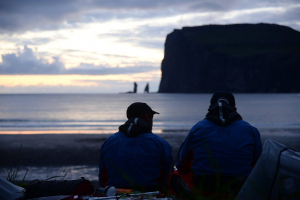 We lived in the kayak, resting and paddling both at the same time barely an inch above the burningly cold ocean water which was black like the inside of a cave and made your hands flinch with every touch and left me questioning what animals could survive in such Arctic temperatures. Dressed in nothing more than a dry suit and a fleece base layer we battled against the unforgiving ocean weather until after 46hrs paddling we arrived on a beach in NW Iceland. Hardly able to stand upright, we staggered to a fresh water stream and collapsed into it.
We lived in the kayak, resting and paddling both at the same time barely an inch above the burningly cold ocean water which was black like the inside of a cave and made your hands flinch with every touch and left me questioning what animals could survive in such Arctic temperatures. Dressed in nothing more than a dry suit and a fleece base layer we battled against the unforgiving ocean weather until after 46hrs paddling we arrived on a beach in NW Iceland. Hardly able to stand upright, we staggered to a fresh water stream and collapsed into it.
Life on board the kayak is beyond difficult – completing the simplest of tasks seems to take hours. Cooking hot meals was one way of mitigating our largest risk: hypothermia, but as you might imagine cooking at sea is difficult, cooking in a kayak at sea is almost impossible.
The following two weeks consisted of paddling 600nm between headlands around the north coast of Iceland. Not only did we pass some of the most majestic fjords and mountains, we also met some incredibly generous and welcoming people before arriving at our last stop before heading across the ocean to the Faroe Islands.
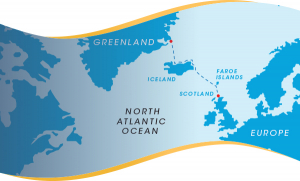 From Iceland to the Faroes was our longest and most dangerous stretch of open ocean famously called ‘The Devils Dancefloor’. There is no support boat next to us, so once we leave land we are committed, we have everything we need to exist from loo paper to fresh water. This leg could take us up to a week and of course, weather forecasts aren’t that accurate that far out – hence the danger. If the weather changed for the worse, we had nowhere to hide.
From Iceland to the Faroes was our longest and most dangerous stretch of open ocean famously called ‘The Devils Dancefloor’. There is no support boat next to us, so once we leave land we are committed, we have everything we need to exist from loo paper to fresh water. This leg could take us up to a week and of course, weather forecasts aren’t that accurate that far out – hence the danger. If the weather changed for the worse, we had nowhere to hide.
Famed for its steep cliffs falling straight into the ocean, arriving into the Faroe Islands was a moment we will never forget. From 240nm out we were aiming for a 500m wide entrance to the main channel that runs down the centre of the island. Currents flow at up to 8kts through the islands so the waters can be exceptionally turbulent around here. We arrived at 0300hrs as the sun was about to rise surrounded by vast cliffs and a still, unmoving ocean. We hit the beach, crawled out of the kayak and were simply relieved to have dry land beneath our feet once again.
We had been away from home for almost 2 months and the summer season was drawing to a close. Our weather windows were not only getting shorter, but they were also becoming less frequent. The weather was our dictator; it was the only factor that would determine whether this expedition was possible or not. Indeed, our first attempt to cross the Devils Dancefloor saw us join a passing fishing vessel on day 3, 50nm offshore and head back to the mainland – an adventure in itself.
Three weeks of waiting and after one false start, there was a narrow chance that we could leave the Faroes and make for the Scottish mainland. The window was tight so the island of North Rona (45nm NW of mainland Scotland) seemed like a great place to stop… but we had to get there first. It’s 0515 in the morning, we are 70nm offshore in the North Atlantic Ocean, the morning sun is threatening to rise above the horizon and we have been paddling our 26ft long kayak for the last 30hrs, non-stop. We are exhausted, hallucinating and our own survival hangs in the balance. We simply had to sleep, but would the weather close in around us?
With only a matter of minutes to spare before gales ensued and the ocean turned into a fury of white horses, we landed at North Rona – hard ground couldn’t have come sooner. North Rona is a deserted island with no running water, so having got there, it was then a game of survival. Collecting fresh water from the roof and hunting sea birds was how we survived.
As to whether the Finman did paddle the entire way…? We feel that there are other, more plausible ways that he might have ended up near Aberdeen. For example, he might have been picked up by some Whalers and dropped offshore when he fell ill.
Sixty-six days after leaving the coast of Greenland, we paddled silently into Balnakeil Bay, N.Scotland having done something that potentially no human had ever done before and if they have any sense, would never do again!
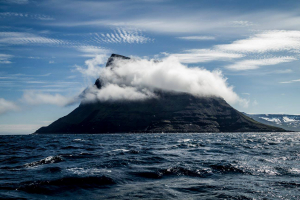
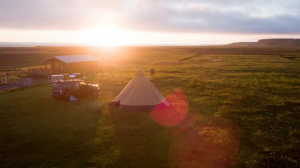
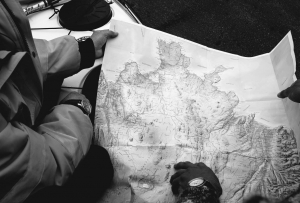
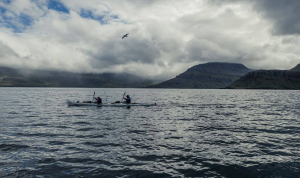
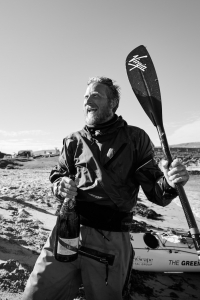
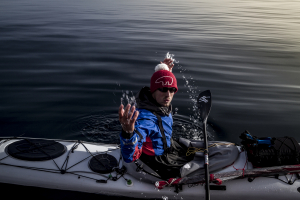
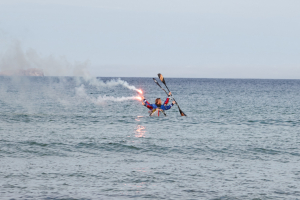
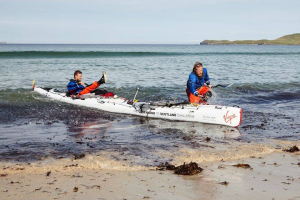
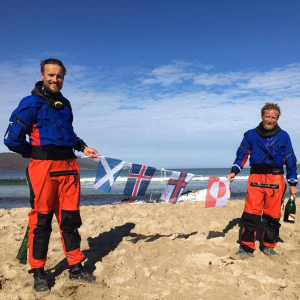
Related blog posts
Night at the Zoo – explore the park after dark and fall asleep in a Nordic tipi
Måndag 10 januari 2022
Wouldn't it be exciting to spend the night right in the middle of a zoo? – That is exactly what you can do at Skånes Djurpark, a wildlife park in southern Sweden. At their campsite, Camp Oak, you stay in the park after it closes and will make yourself at home in a Nordic tipi from Tentipi. When the night comes you might just fall asleep to the wolves’ howls.
Skånes Djurpark is a Wildlife Park with a long history, it dates back to 1952. It focuses on animals from the Nordic area and has always lived by the ruling with “no animals in cages”. The animals live in large paddocks that recreates the animals’ natural environments.
Sapmi Nature Camp – Sami culture and glamping in the arctic
Torsdag 30 december 2021
Lennart Pittja is a Sámi entrepreneur with a mission: with his world-renowned eco-tourism company he wants to spread the knowledge about his people – the Sami, indigenous of northern Scandinavia and Russia. With over 20 years of experience as a wildlife guide and nature photographer in the arctic region he started Sápmi Nature Camp. Where his guests stay in Nordic tipis from Tentipi on his reindeer herding land outside of Gällivare, in northern Sweden.
At Sapmi Nature camp you can experience real winter, see the northern lights, eat traditional Sami food, and have a cultural exchange in a genuine atmosphere. The scenic location has gained attraction from around the world. In 2017 it was listed by National Geographic as one of the top 21 places in the world to visit if you care about the planet.
Discovering the world’s most remote places with Mike Fuchs
Torsdag 17 juni 2021
It was the first day of the trip, adventurer Mike Fuchs and his friend Eric Folz had just a couple of hours before been dropped off as far north as they could possibly come in Svalbard when they saw them. Two polar bears, one mother and its cub. A situation that could become deadly if the bears decided to have a closer look on their new visitors.
“I know how protective the mothers can be of their cubs. We had to set up our camp in a place that provided a good overview of the location so we could spend the night bear watching. It was both a scary feeling seeing them so early into our trip, but it was also very fascinating”, says Mike Fuchs.
Nine things you need to know about winter camping
Onsdag 5 maj 2021
Prepare before setting out for winter camping. Here are nine tips and tricks from Tentipi about what you need to think of before you go: the right tent for winter camping, how to pack the snow, comfort in snow, which tent pegs to use, where to pitch the tent, about snow weight, what heat sources can be combined with the tent, how to make a fire safely and other equipment.
Choose tents according to occasion, different tent types work differently at winter camping. When it’s icy, the tent needs to be more robust than a tent which is exclusively used in summer. The tent frame needs to withstand a certain amount of snow and functional ventilation is important. If you want to use a heat source, for example a fireplace or a stove, the tent needs to have ventilation openings both at ground level and at the top. Without a heat source, a smaller tent is preferable, as it heats up faster when the air volume is smaller.
A versatile tent with many possibilities Part 1 Adventure tents
Måndag 7 december 2020
A tent from Tentipi is a Nordic tipi and the tent has eight or nine sides, if it is not the smallest that has six sides. In the smallest tent you can stand straight if you are less than 160 centimetres long and in the largest you can get together several thousand people. The tent is versatile in more ways. Continue to read to see why these tents are so flexible and adaptable. This blog post is about the smaller tents in Tentipi's range, tents used by adventurers, families, hikers and others who want to live close to nature for a shorter or longer period of time.

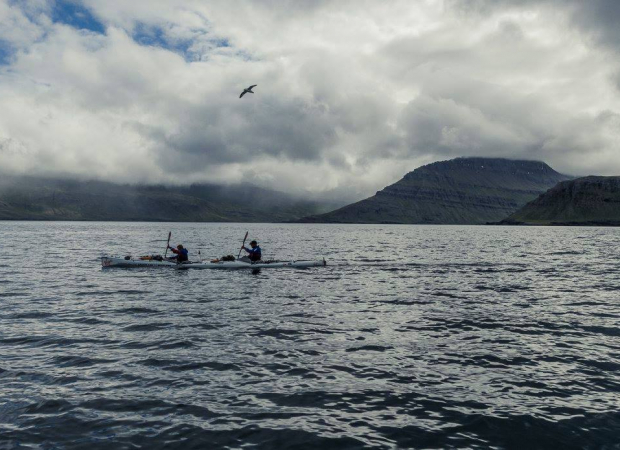





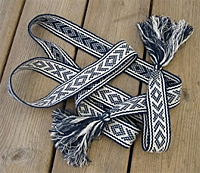


Please click the 'Add comment' button below if you wish to comment.